Frequently asked questions
Sprains and strains, herniated discs, and stenosis are the most common causes of lower back pain. Sprains are injuries to your ligaments, which help hold the bones of your spine together. Strains are injuries to muscles or tendons that connect other muscles to back bones. Herniated discs cause sudden lower back pain and sometimes even numbness. The pain and numb feeling can extend through your buttocks, down your leg, and — for some people — all the way into the foot. Spinal stenosis is caused by bulging discs, thickened ligaments, or small growths squeezing on the spinal canal that holds the spinal cord
Many factors, often stemming from your lifestyle, can lead to pain in your spine. Some worth considering include:
- Age
- Weight of a child’s backpack
- Genetics
- Pregnancy
- Stress
- Weakened abdominal muscles
- Weakened back muscles
- Weight gain
- Work environment risks (duration of your commute, desk/chair height, sitting too long, etc.)
Often neck or back pain will go away on its own with rest and over-the-counter medications. However, if you experience any of the following, consider making an appointment or if it just can’t wait come to any of our Urgent Care locations or our Emergency Department.
- A fever
- Unexplained recent weight loss
- Pain in your chest
- Swelling or a deformity in your back
- Loss of bladder or bowel control
- An inability to pass urine
- Constant pain that won’t ease
- Worse pain at night
- Numbness around your genitals, buttocks or back passage
- Tingling or numbness in your legs or arms
The most common diagnostic tests for neck and pain pain include:
- X-ray: Images show the alignment of your bones and whether you have arthritis, broken or displaced bones.
- CT scan: Detailed and cross section images of the bones in your spine; can reveal herniated discs or problems with bones, muscles, tissue, tendons, nerves, ligaments and blood vessels.
- MRI scan: Detailed images of vertebrae, intervertebral discs and nerve roots to accurately diagnose spinal disorders and to rule out spinal infections or tumors.
In most instances, chronic pain (lower back pain, upper back pain, neck pain) occurs because your physiological condition is ongoing and unresolved (arthritis is one example). However, often the pain doesn’t appear to be caused by any disease, injury or detectable damage to the nervous system.
Sciatica is pain along the sciatic nerve. It is usually a sharp, burning pain originating in the buttock that travels down the back of the thigh and can go down the lower leg to the foot. Herniated discs in your back or spinal stenosis are common causes of sciatica. Treatment options range from conservative measures to injections to surgical options in severe cases.
Your lumbar region begins just below the ribcage. If someone refers to lumbar back pain, they are also referring to lower back pain. This type of pain is the number one cause of missed work in the United States.
The thoracic spine runs from the base of the next to the abdomen. It is the longest part of your spine, and is often considered the most complex. This type of back pain is also called upper back pain.
Many adults sit for long periods of time at a desk or workstation. When we hold our heads a certain way for too long, strains can occur. Here are a few ways you can prevent neck pain:
- When working on your computer, place your screen at eye level.
- Stretch regularly, especially if you tend to sit at a desk or have a long commute.
- Try to sleep on your back versus your stomach or side.
- Invest in a firm pillow that supports your head and neck.
- Consider participating in yoga or Pilates.
- Remember to practice good posture and
avoid hunching forward.
Right back pain could include sprains and strains, kidney stones, infections and conditions that affect the intestines or reproductive organs. If your right back pain lasts more than a few weeks after rest and self-care, please make an appointment with one of our specialists.
Left back pain could be a symptom of something originating from the kidneys, pancreas, colon or uterus. Upper back pain could stem from your shoulder, which could include tissue damage.
















